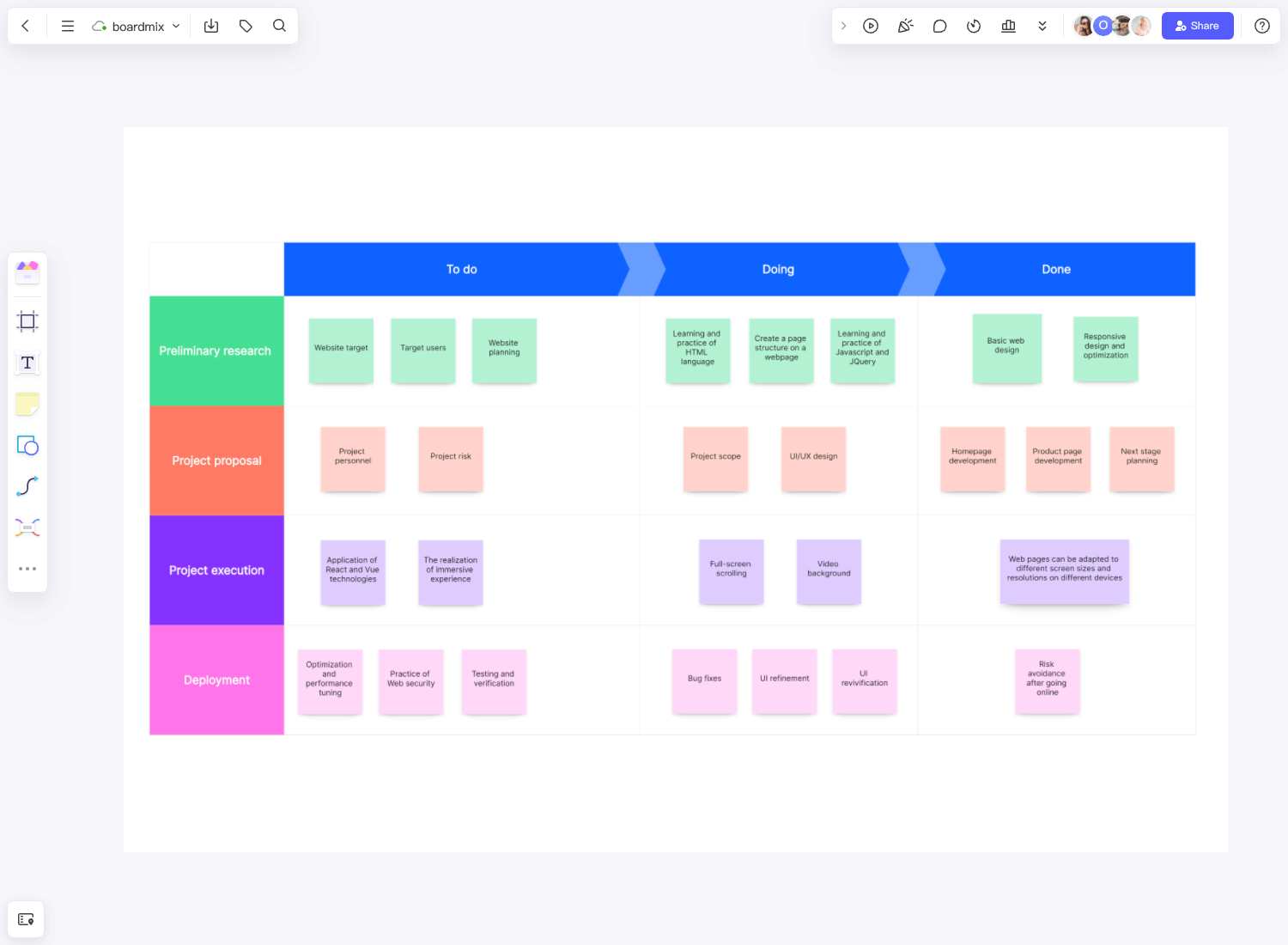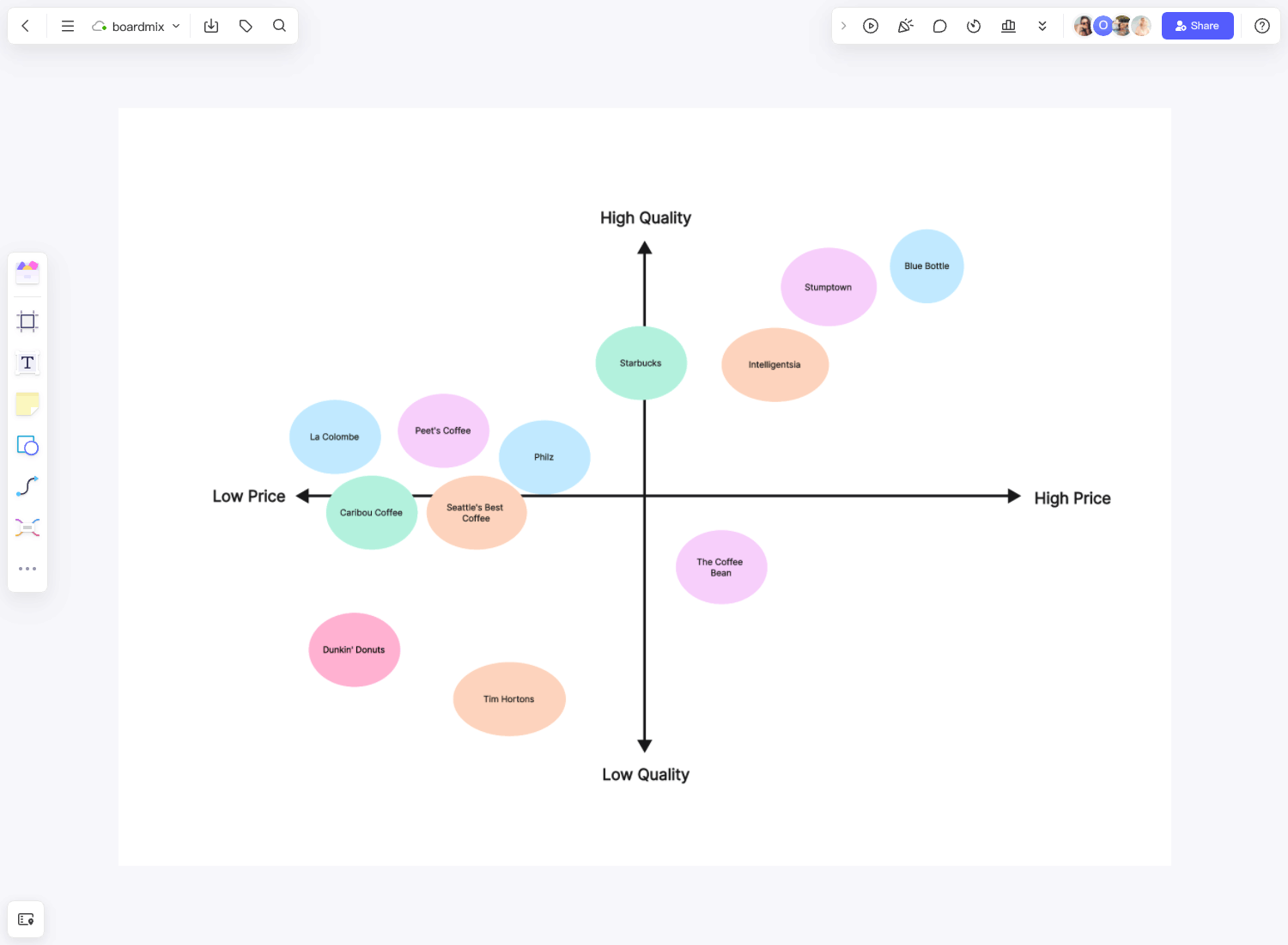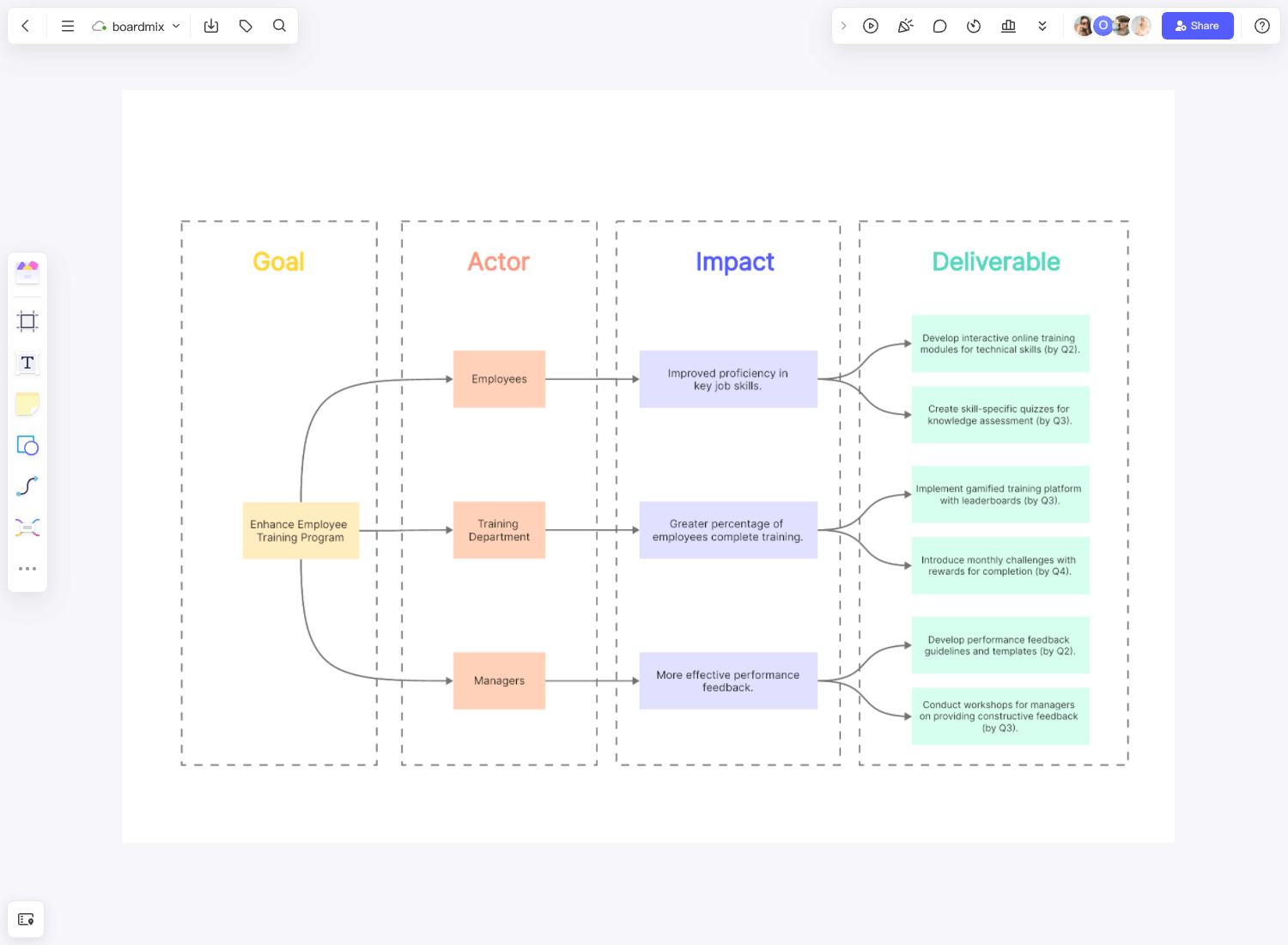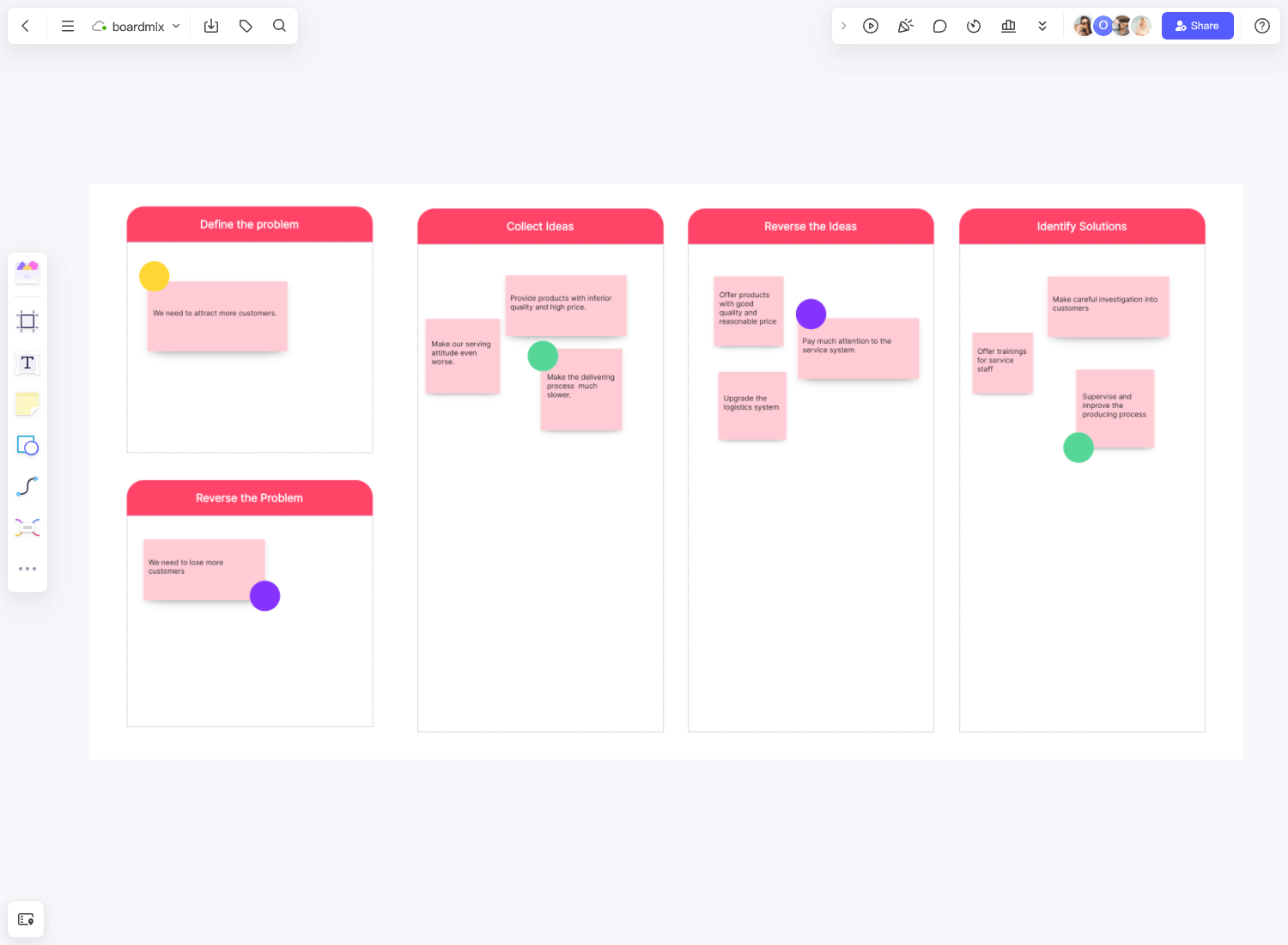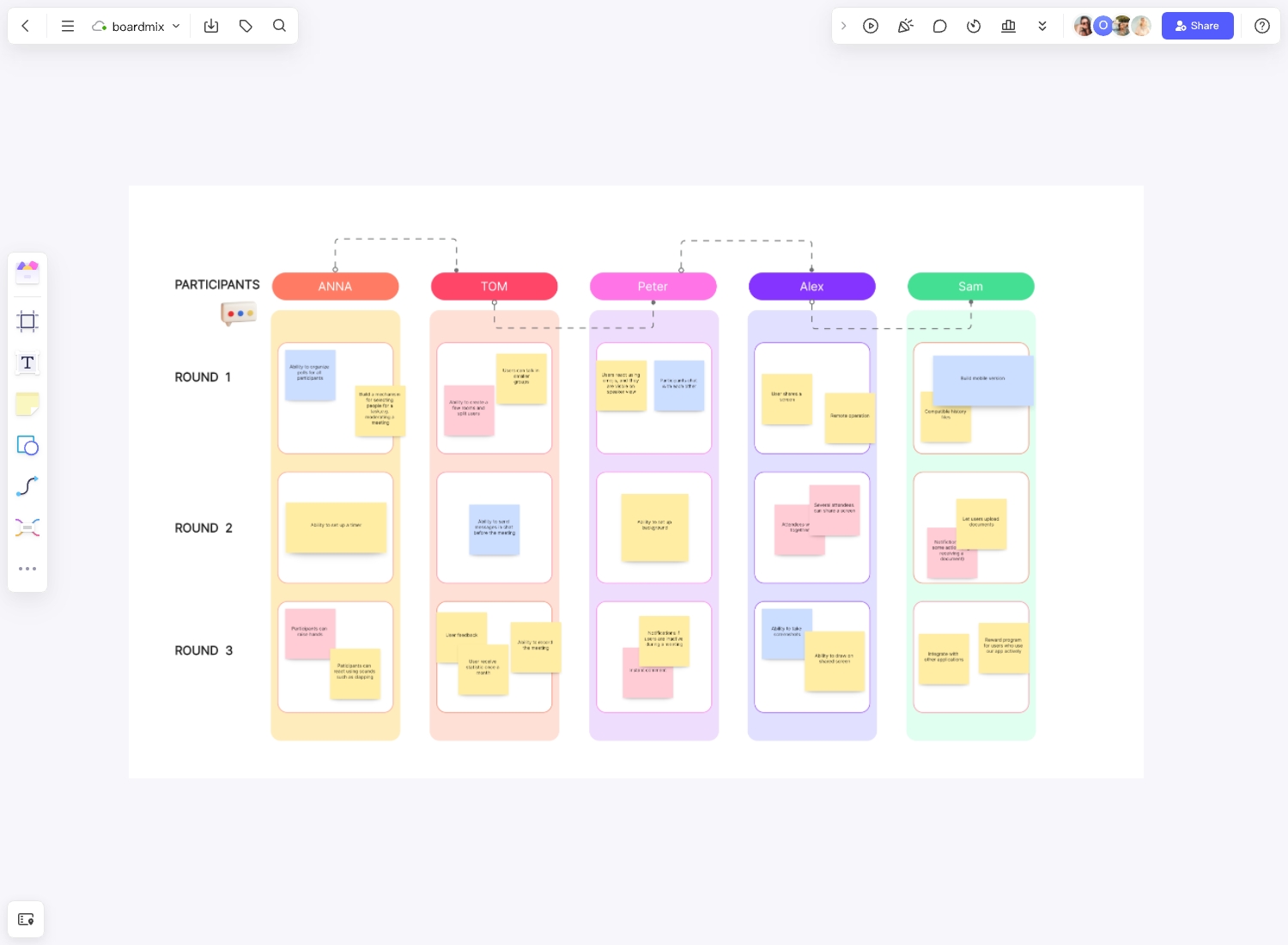The technology landscape is evolving rapidly, and every organization tends to stay ahead in it. Since technology plays a central role in today's business operations, it is important to have a proper plan in place on how to align technology investments with business goals and stay aligned with new technology trends. This is where the technology roadmap comes into action. This template provides a fully customized technology roadmap that helps organizations make informed decisions about their technology investments and have a clear action plan.
What Is Technology Roadmap
A technology roadmap is a visual diagram or document presenting an organization's strategic technology adoption plan. It outlines the future technology plans and the specific technological goals that align with broader organizational objectives.
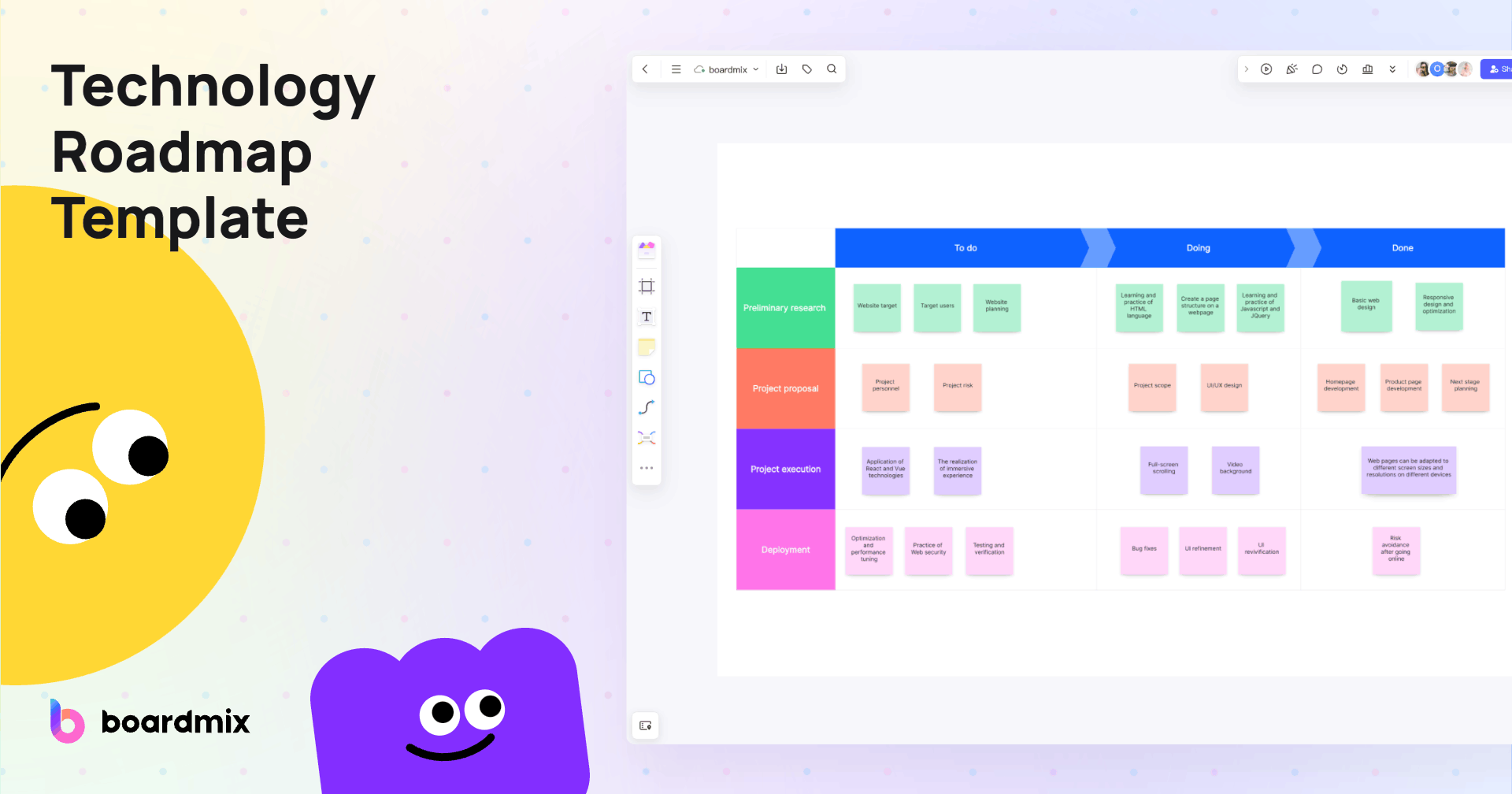
Build Technology Roadmap for Free
Technology roadmaps are developed to help plan and strategize what, why, and when specific technologies will be onboarded. A technology roadmap mainly includes the following components:
- Company short-term and long-term goals
- Future technological goals/system capabilities
- Milestones
- Action plans
- Timelines
- Risk factors
- Status reports
Technology mapping requires a team effort and involves a variety of stakeholders and teams, from IT and operation teams to sales, finance, and marketing teams. Overall, the technology roadmap helps an organization make informed strategic decisions about technology investments and ensure that the company's technology infrastructure is future-ready.
Best Practices for Creating a Technology Roadmap
In this tech-driven era, up-to-date technology infrastructure is the key to business prosperity. If the technology roadmap is set rightly, it helps an organization intelligently adapt to changing technology trends and remain competitive.
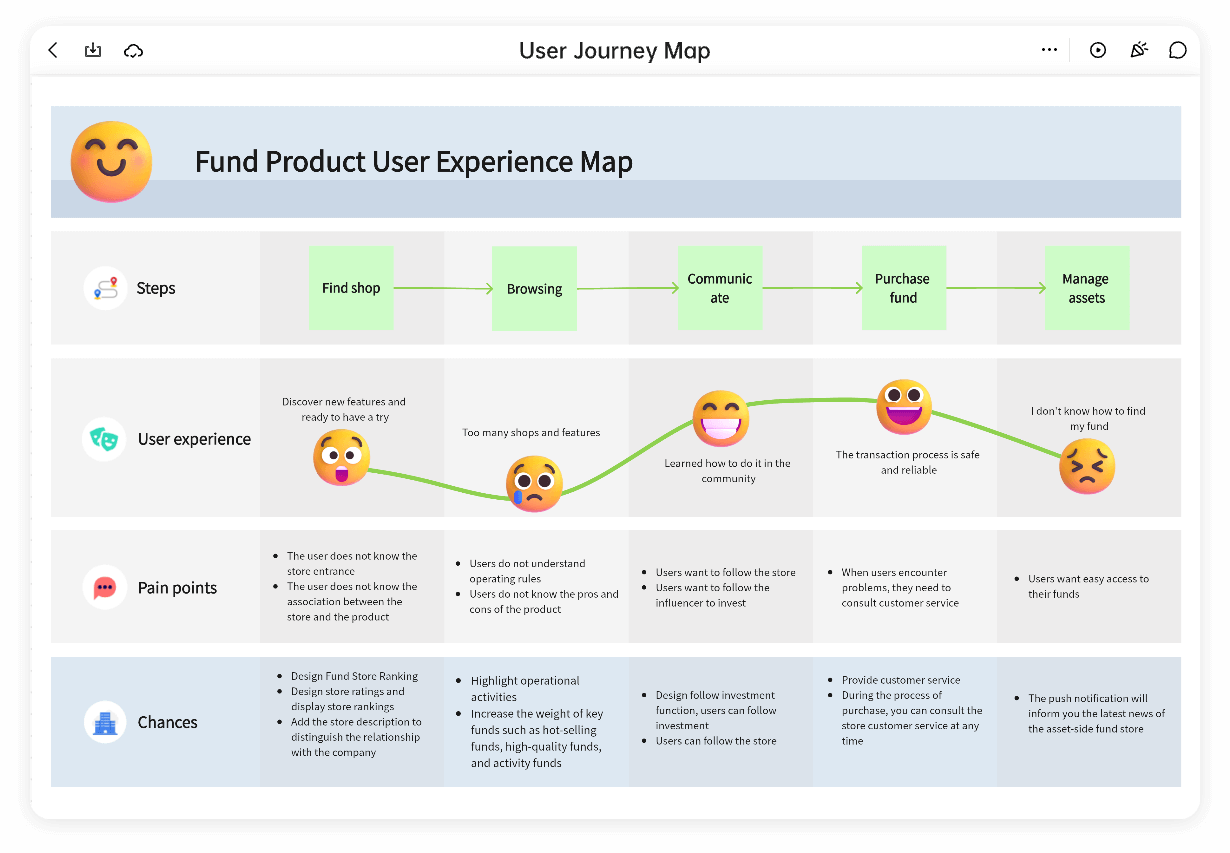
Owing to that, below are a few best practices around the technology roadmap that help create top-notch and strategic roadmaps:
- Involve Stakeholders: Make sure that all the key stakeholders and representatives from different teams are present while creating a technology roadmap. It helps to hear everyone's opinion and create a more collaborative roadmap.
- Easy to Understand: Create a technology roadmap that is simple and easy to understand. It is recommended to create a visual diagram-based roadmap that provides an instant view of the key milestones.
- Flexible Roadmap: Make sure the technology roadmap is adaptable to new changing requirements, as the technology landscape is constantly evolving, so new opportunities should be addressed timely.
- Align with Business Goals: Make sure that the goals of the technology roadmap align with overall business goals and objectives.
- Make Data-Driven Decisions: While brainstorming new system capabilities, use market trends and other resourceful data to make more authentic data-driven decisions.
- Communicate Effectively: Once the technology roadmap is finalized, make sure it is communicated to all the stakeholders to keep everyone on board.
By following the above best practices and more depending on your business model, you can set up a comprehensive, adaptable, and rewarding technology roadmap.
What are the three phases of the technology roadmap?
The three phases of a technology roadmap are often referred to as the "preliminary phase", the "development phase", and the "follow-up phase".
In the preliminary phase, the focus is on defining the purpose and scope of the roadmap. This involves identifying key stakeholders, establishing a clear vision for the technology's future, and setting strategic objectives. The preliminary phase also includes researching market trends, competitive landscapes, and potential technological advancements that could influence the roadmap's direction.
Moving on to the development phase, this is where detailed planning takes place. The technology's trajectory is mapped out, considering factors such as required resources, potential risks, and timeframes. This phase often involves creating a visual representation of the roadmap that outlines milestones, timelines, and responsibilities.
Finally, in the follow-up phase, the implementation of the roadmap begins. Progress is monitored closely to ensure alignment with strategic objectives and adjustments are made as necessary. This phase also includes regular reviews and updates to keep the roadmap relevant in an ever-changing technological landscape.
These phases are not rigid compartments but rather parts of a fluid process that requires continuous adaptation and refinement. A successful technology roadmap is not static but evolves with changes in business strategy, market dynamics, or new technological advancements.
How do you create a technology roadmap?
Creating a technology roadmap is a systematic process that requires careful planning and strategic thinking. Here's a general step-by-step guide on how to create one:
1. Invite Members and Define Goals
Invite members and stakeholders and begin with defining the goals of the technology roadmap. Specify what technologies you intend to focus on and what are the key goals to achieve.
2. Analyze the Current Technology State
Conduct a thorough analysis of the current technology state to pinpoint what are the strengths, weaknesses, and gaps in the current infrastructure.
3. Set Targeted Capabilities
Brainstorm what key technological investments the team wants to make that align with the business goals. It involves specifying specific goals and milestones the team wants to achieve with new systems.
4. Prioritize Initiatives and Set up an Action Plan
Prioritize the initiatives/goals the team intends to accomplish based on their importance level. Once done, set up an action plan that details the timelines, milestones, and other attributes. Let the team customize the template with the action plan to have a central place to track the progress.
5. Review and Update the Roadmap Regularly
Keep the technology roadmap up-to-date with all the new progress. Moreover, it should be reviewed regularly to ensure that the initiatives align with the business goals and technology trends.
Examples of Technology Roadmap
IT Technology Roadmap
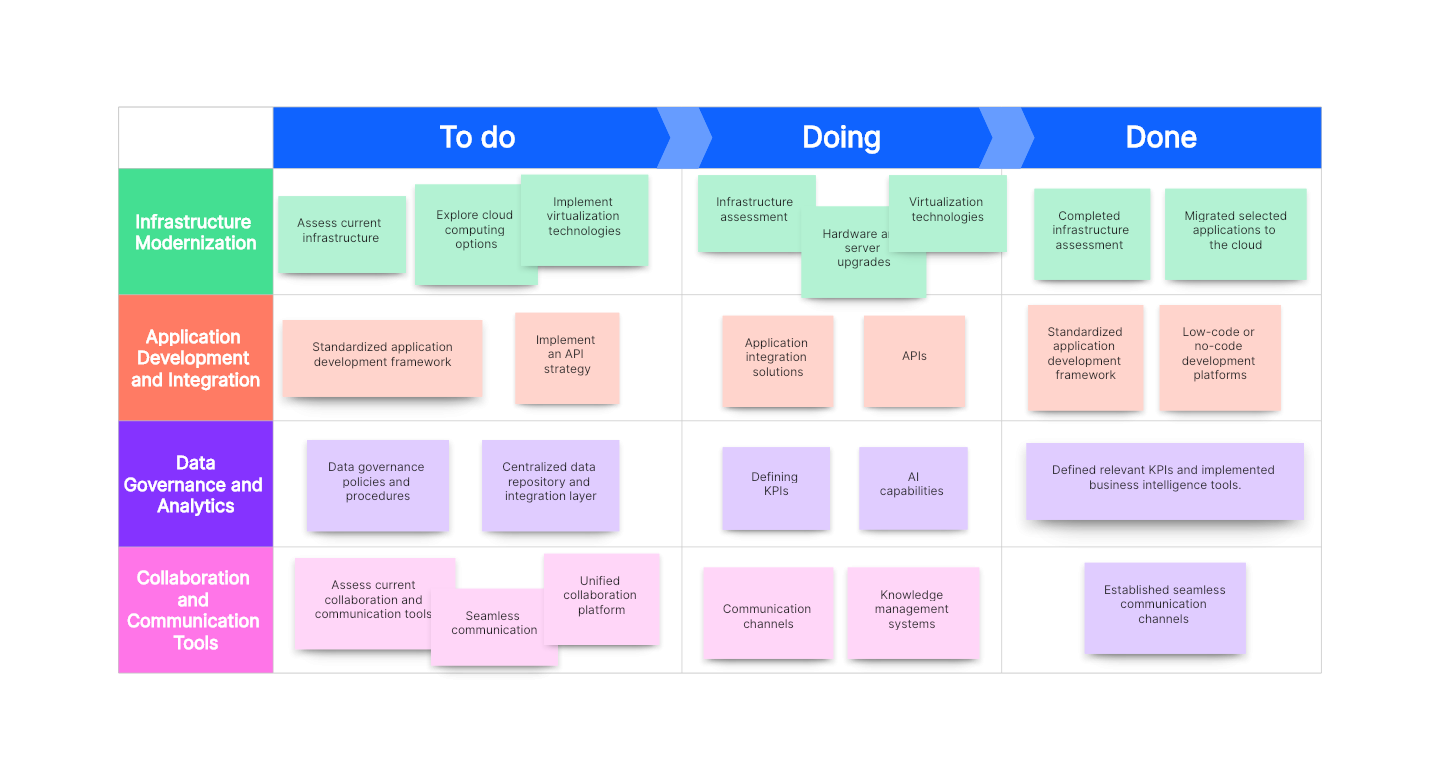
Build Technology Roadmap for Free
BI Technology Roadmap
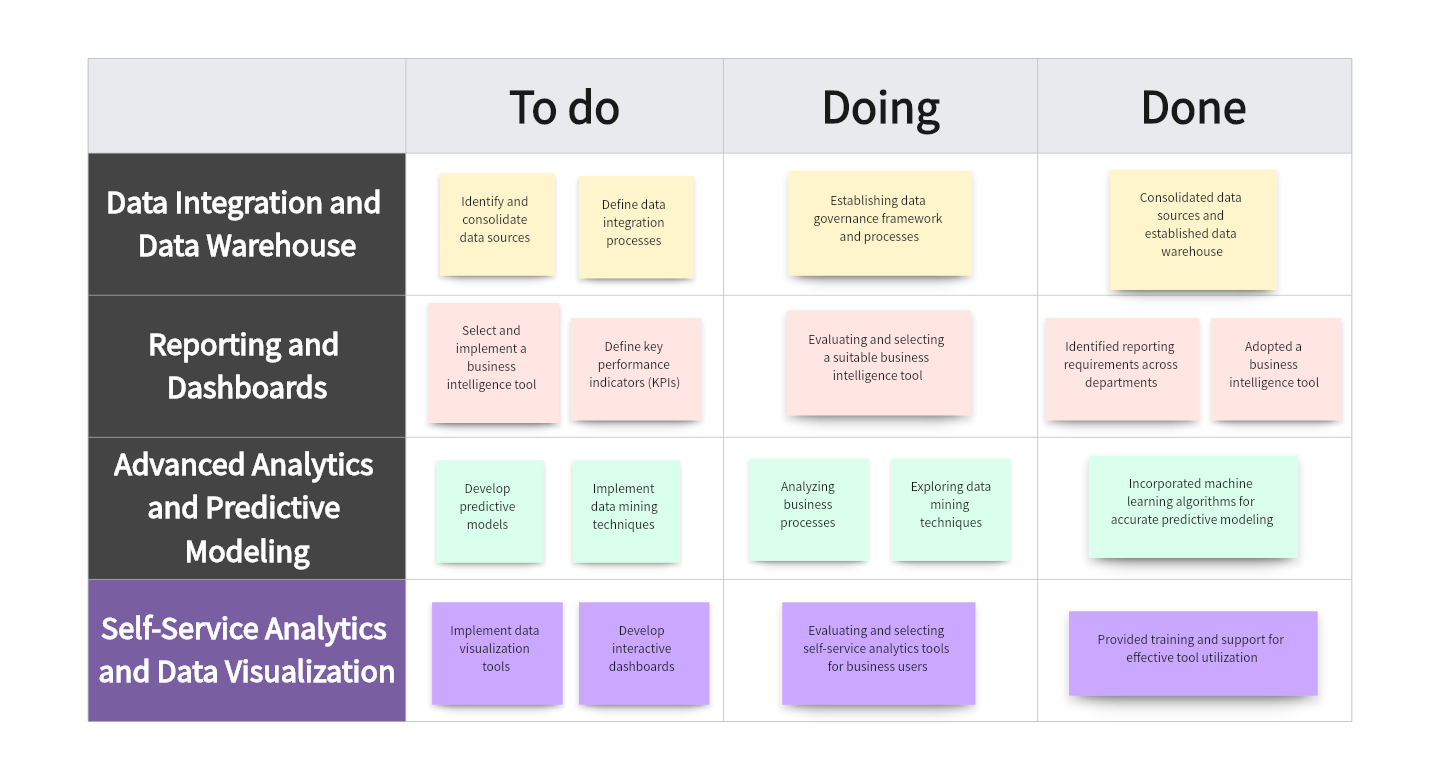
Technology Roadmap in Thesis Writing
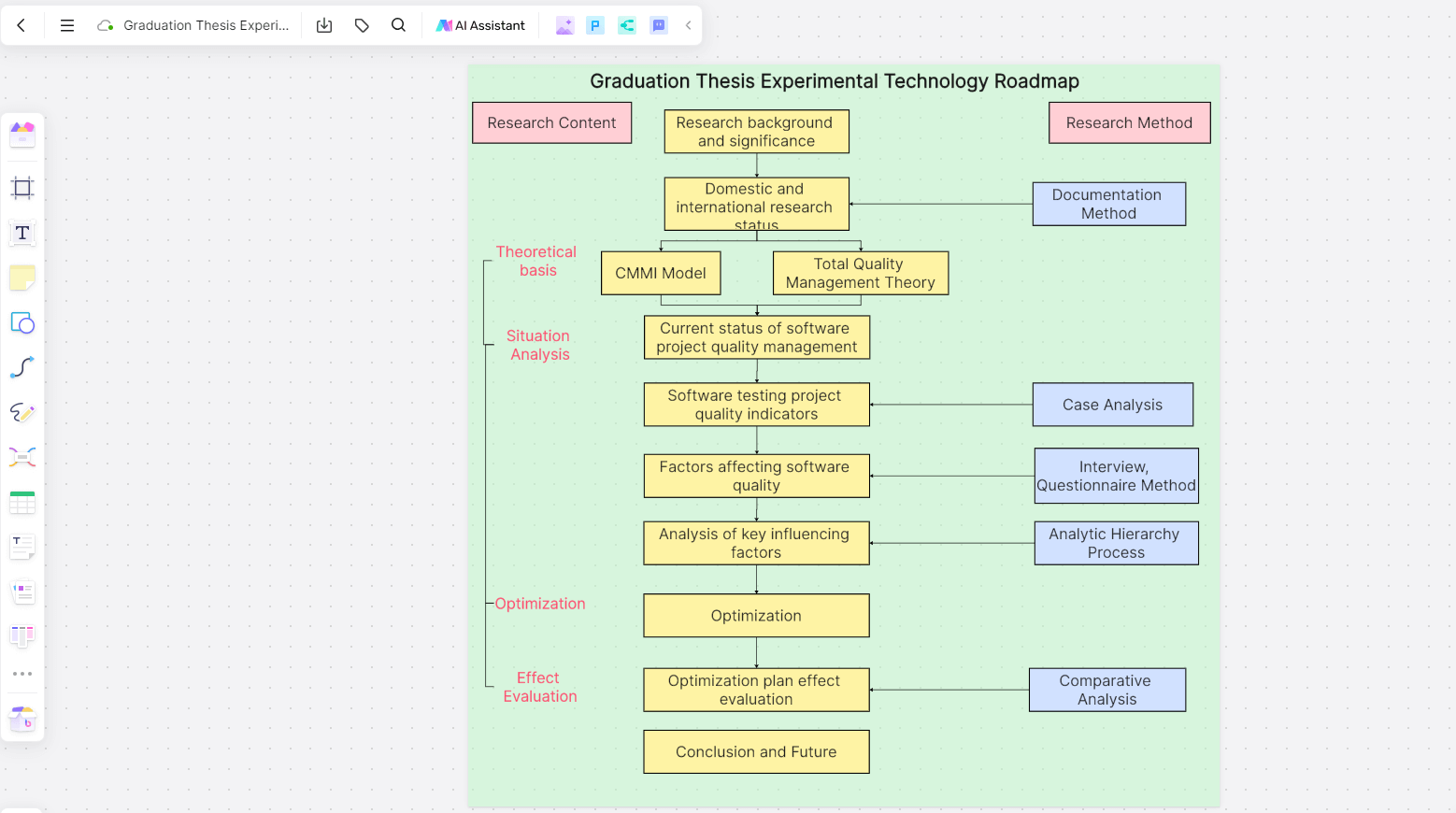
Build Technology Roadmap for Free
Creating a Technology Roadmap with an Online Tool
Boardmix is an excellent tool for creating technology roadmaps, offering numerous features and characteristics that make it an ideal choice for team collaboration and project planning.
Step1: Preparation: Determining the Methodology for the Technology Roadmap
Before drawing a technology roadmap, it is crucial to clarify the research content/direction of the paper and formulate research logic. That ensures the final production of the technology roadmap is clear and gives the reader a sense of clarity.
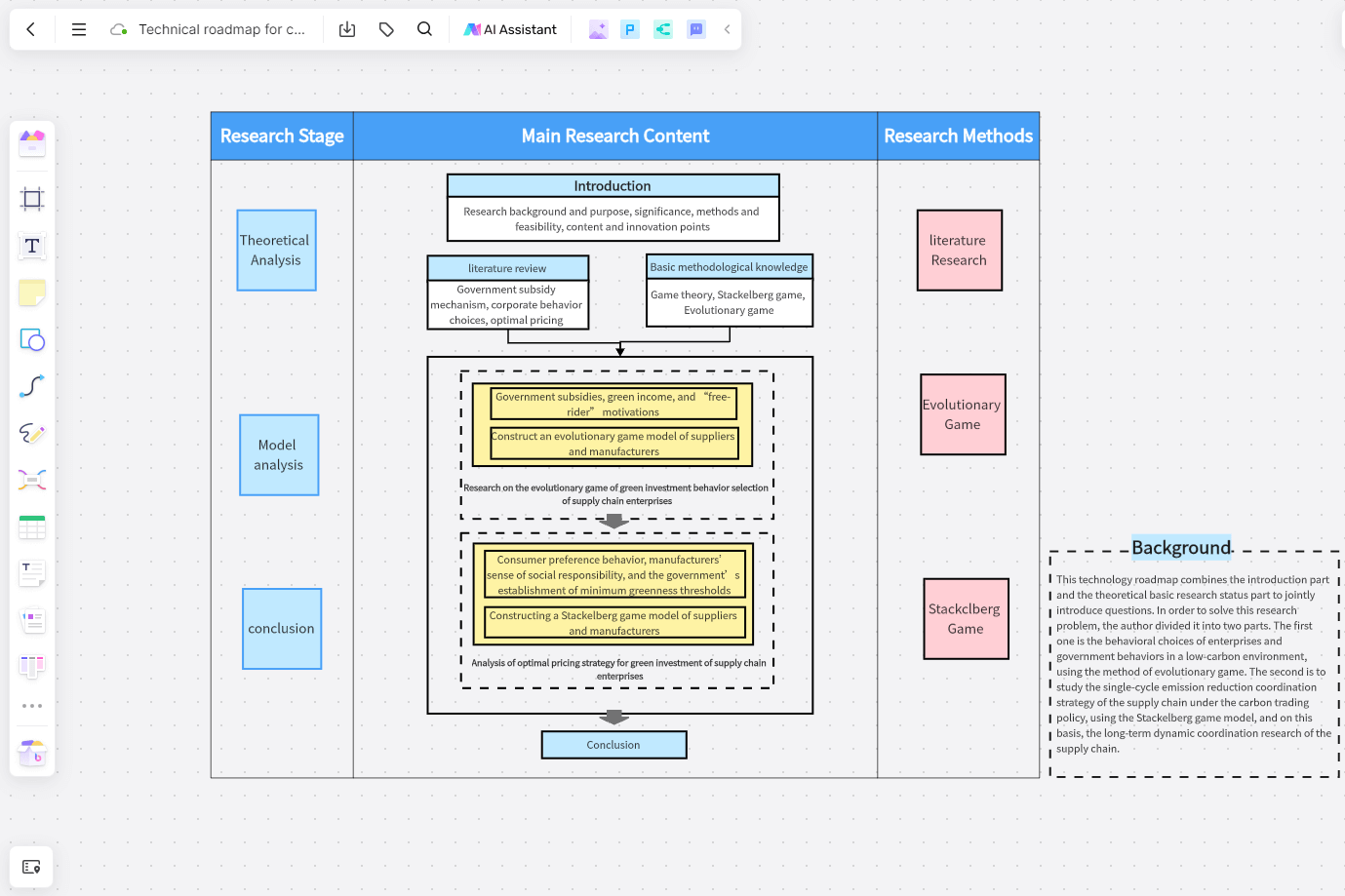
Step2: Mapping technology roadmap relationship paths
The Boardmix Online Whiteboard uses connecting lines to represent the path relationship between flowchart components. When the mouse is placed on the graphic, an arrow appears, drag it in the desired direction, and perfectly interpret our layout on the whiteboard.
If we need some pictures and information for visualization, we can also directly insert pictures and links to add to the technology roadmap.
Step3: One Click Sharing Technology Roadmap
Real-time collaboration and communication are the biggest features of the Boardmix online whiteboard tool, which supports multiple people's real-time online editing. After we finish drawing the technical roadmap, click the ‘Share’ button in the upper right corner to share the document with others, and invite team members to collaborate and edit online.
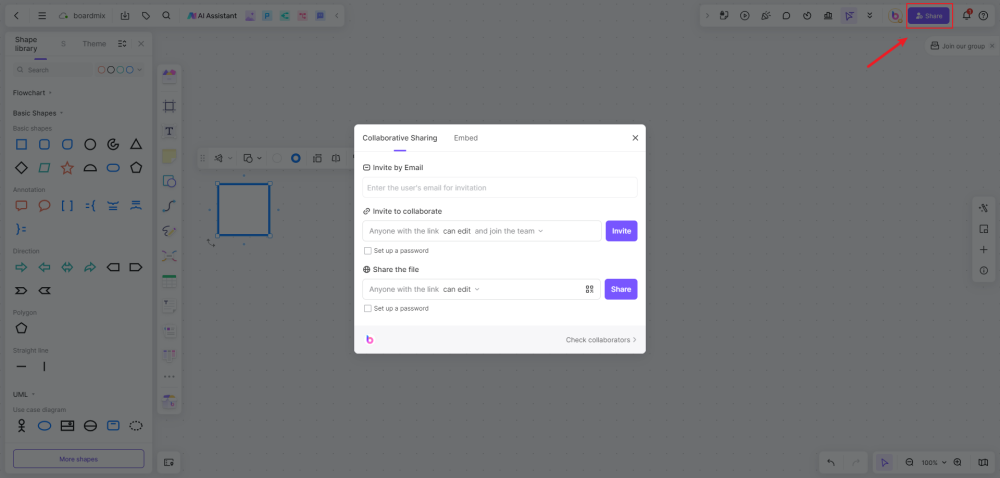
Technology Roadmap FAQs
Why use a technology roadmap?
A technology roadmap is a valuable tool that helps organizations navigate the complex world of technology by providing a clear direction, aligning with business goals, prioritizing initiatives, managing risks, allocating resources, facilitating collaboration, and delivering a competitive advantage.
What is the difference between a product roadmap and a technology roadmap?
Product roadmaps assist in aligning non-technical stakeholders at a broader level, while technology roadmaps aid in organizing implementation specifics for engineers. When integrated, these roadmaps work together to ensure timely, budget-conscious, and goal-driven project execution, ultimately supporting the long-term objectives of the organization.







